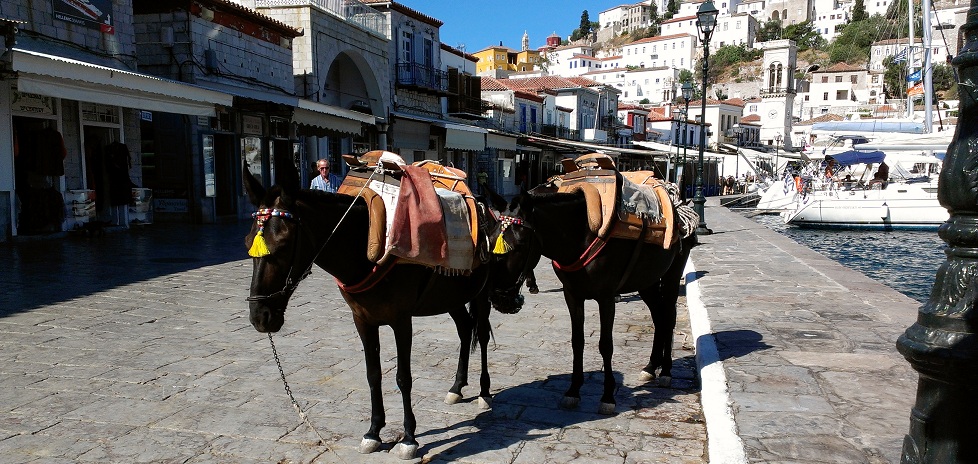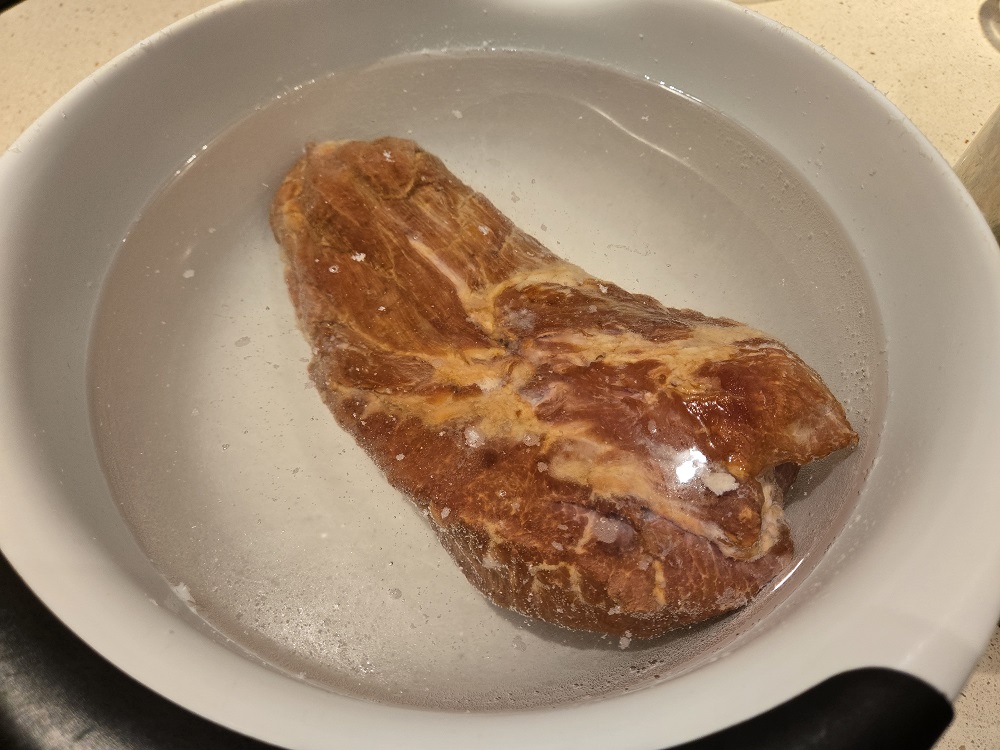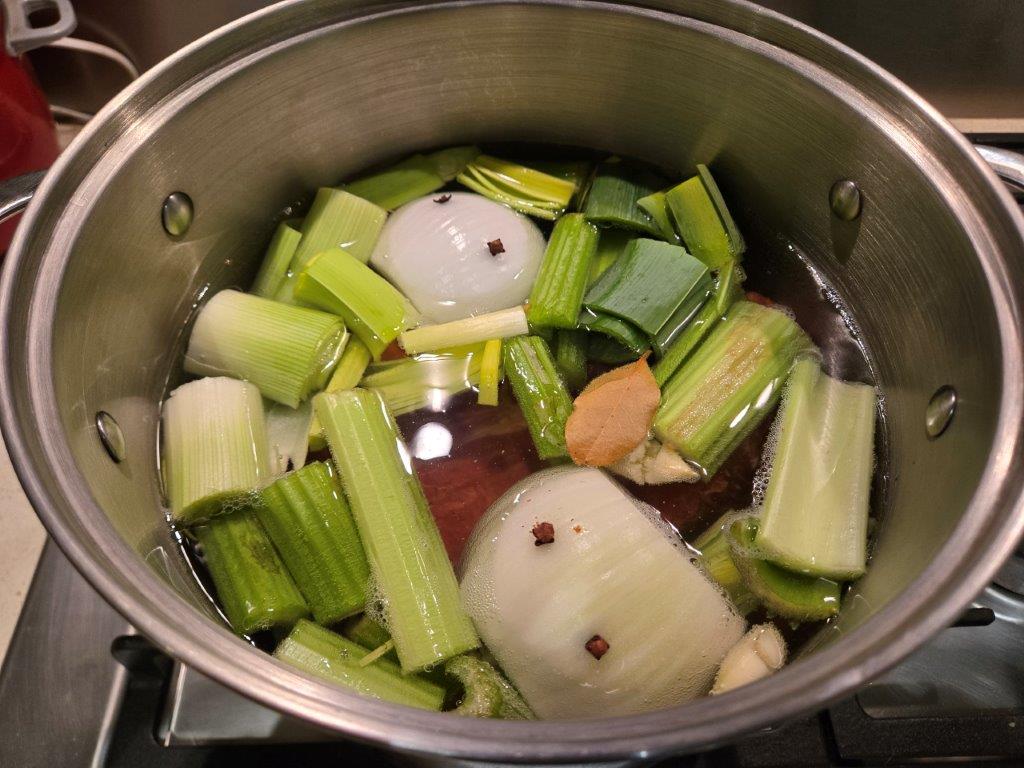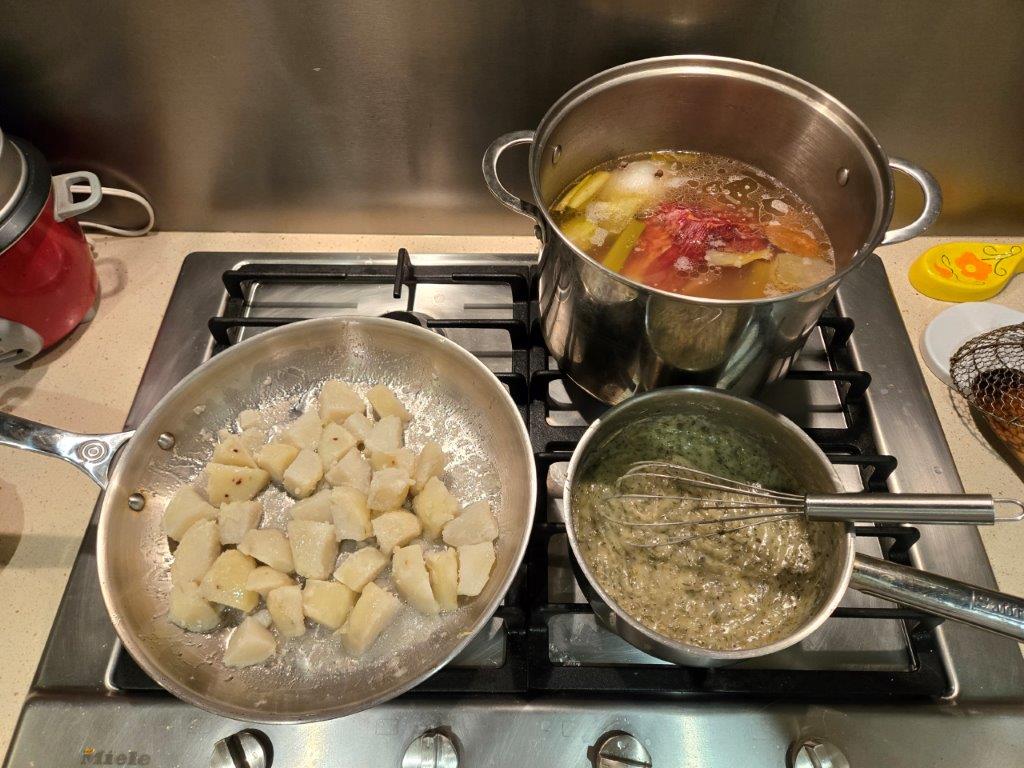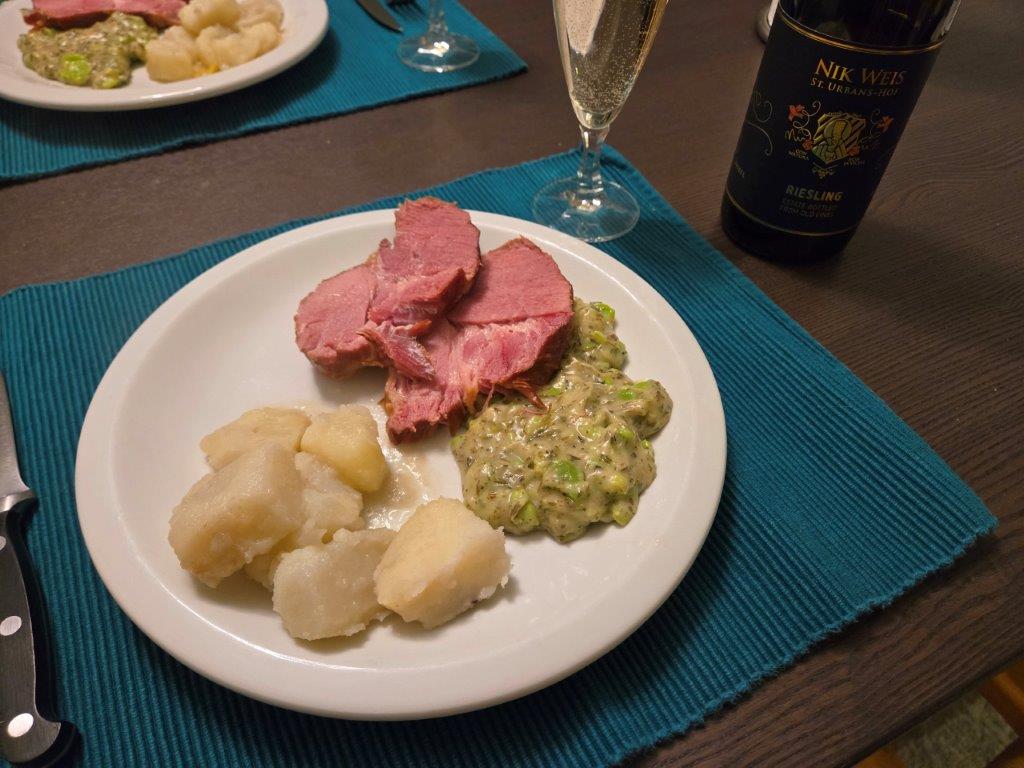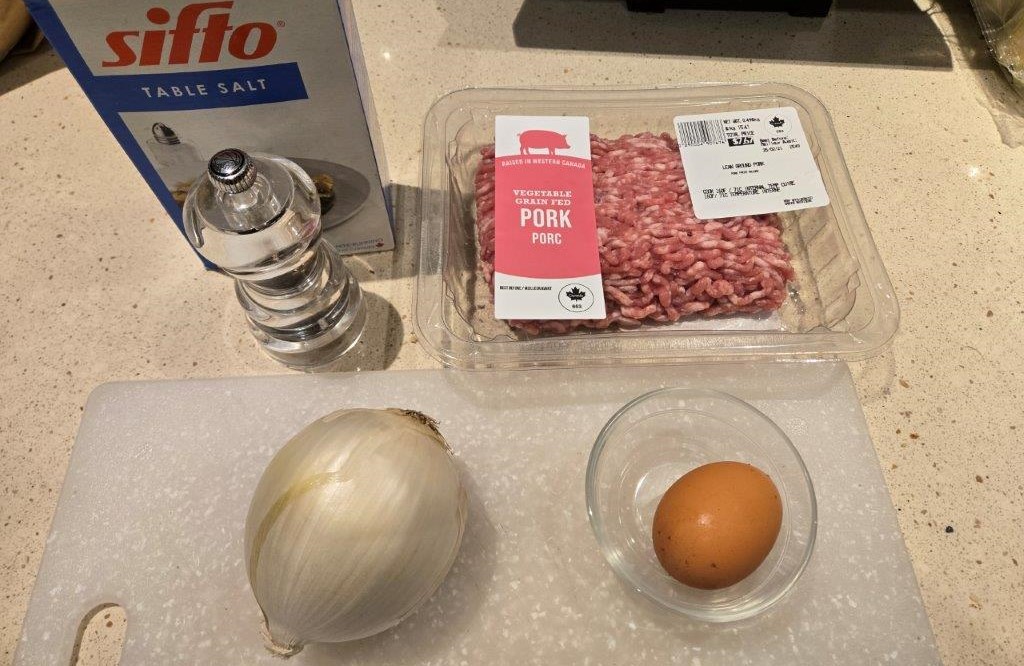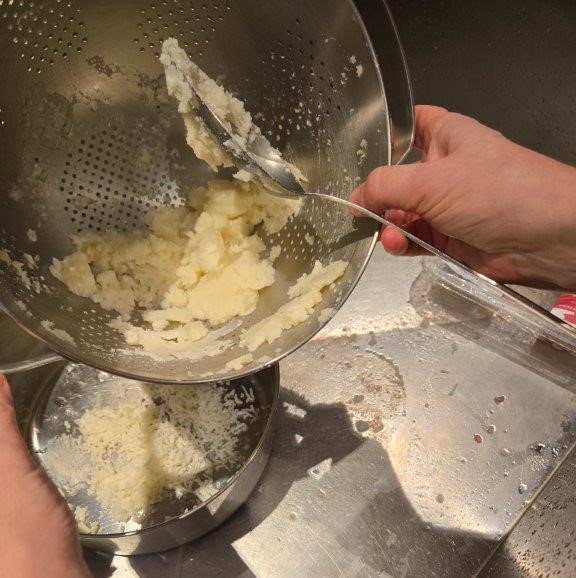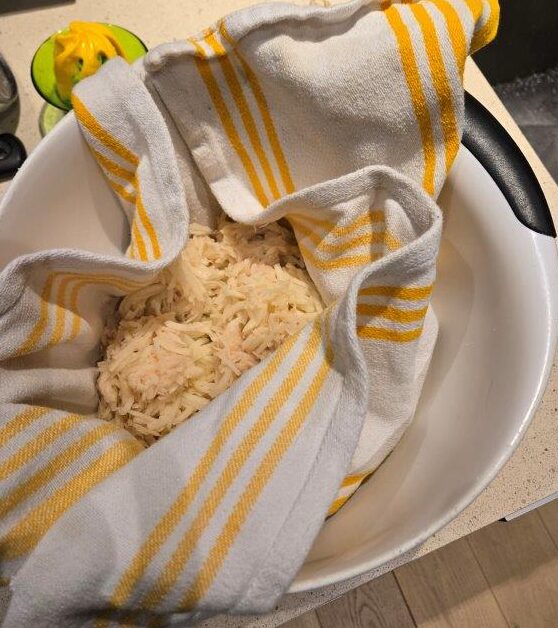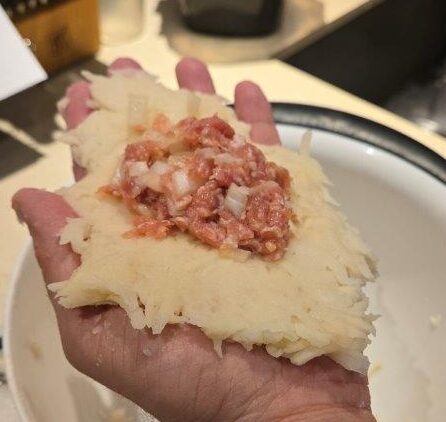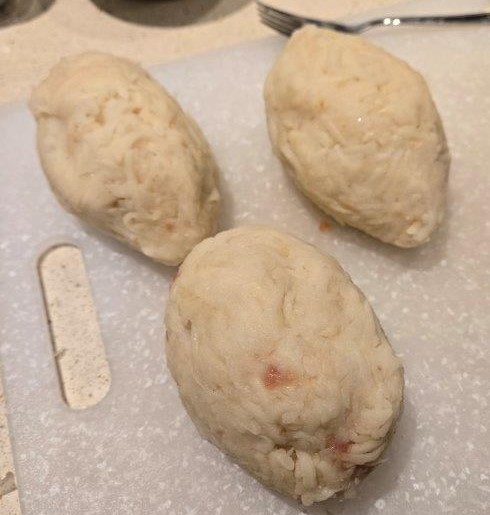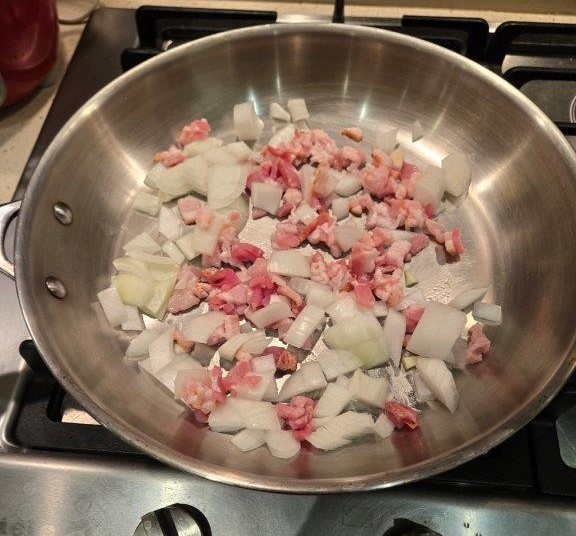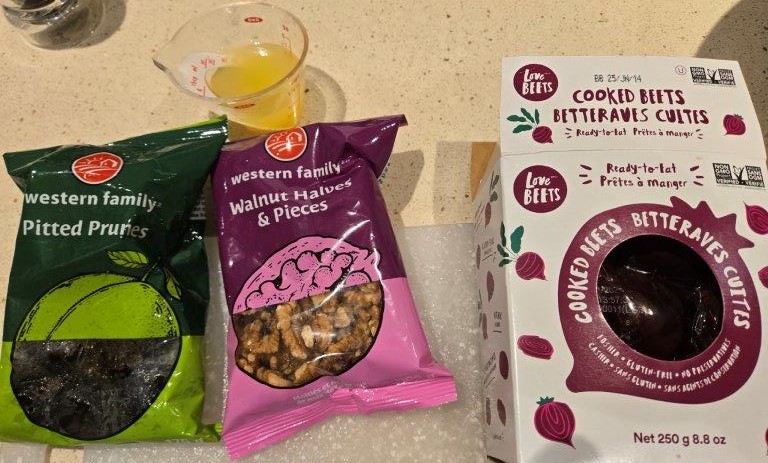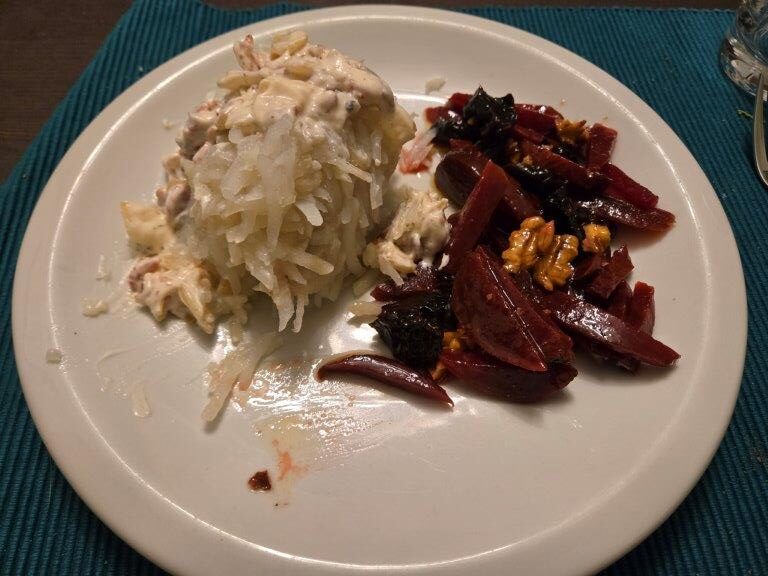At Yale, there’s a saying: “Your Veritas sucks if you ain’t got no Lux.” I could explain that, but it’s not worth the effort, really.
I think a BETTER saying for today’s post would be “Your Benelux sucks if you ain’t got no Lux,” since it refers to the subject of today’s meal – Luxembourg! We both think we’ve PROBABLY been there, but we’re not certain. It would have been something like 20-30 years ago if we have.
Luxembourg is a big country by small country standards, with over 15 times the total area of Liechtenstein. But it’s a small country by Big Country standards, having never achieved a #17 hit on the UK pop charts with a song named “Luxembourg.”
For this meal, we are making the acknowledged national dish of Luxembourg, Judd mat Gaardebounen, or smoked pork collar with fava beans. So to start with, we had to go shopping for the two key ingredients.
Smoked pork collar I found at a local eastern European butcher. This kind of smoked meat is quite salty, so it’s necessary to soak for a long time to remove some of the brine.
Weirdly, one of the recipes I found for this says you can smoke a pork neck yourself by putting it on a rack in a dutch oven, putting rice and herbs under it, and heating the pot until the herbs start smoking.
This strikes me as nonsense, and the pictures of their results would seem to confirm it. The fully “smoked” pork in their recipe looked grey, rather than ham-colored pink like ours did.
At any rate, the actual cooking process once you’ve soaked your pork is pretty straightforward – you just boil it for several hours along with a bunch of aromatics like carrots and leeks. There IS an onion in this recipe, as per usual, but in this case it only gets chopped in half and has a few cloves stuck in it.
Which leaves us to talk about the much more labor intensive part of this recipe – the fava beans. While on my shopping trip, I picked up a bag of dried fava beans, but then to my great surprise, the next store I walked into had them fresh. In Canada, in February. Definitely not what I was expecting.
We’ve never cooked with these things before, and they are kind of monsters. They look like this when you first get them.
Those have to be shelled, and the inner beans look like this.
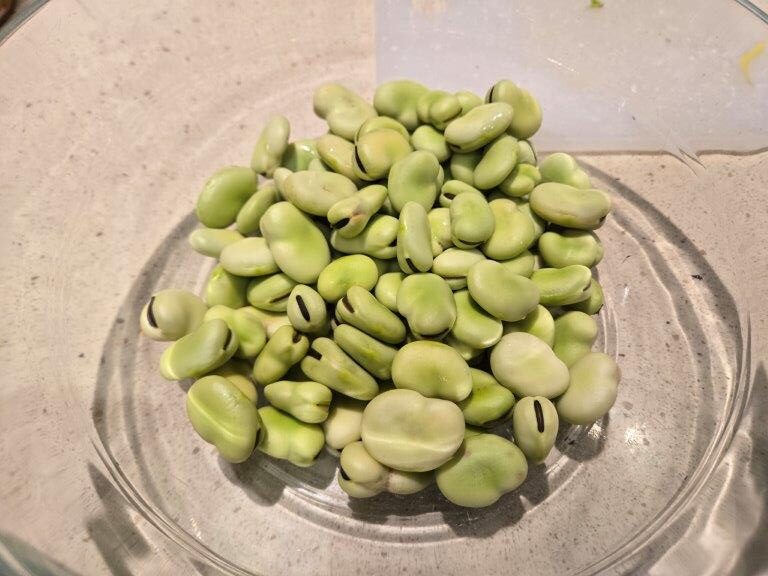
Those beans have to be blanched, i.e., tossed in boiling water for a few minutes, and then dropped in ice water to stop cooking.
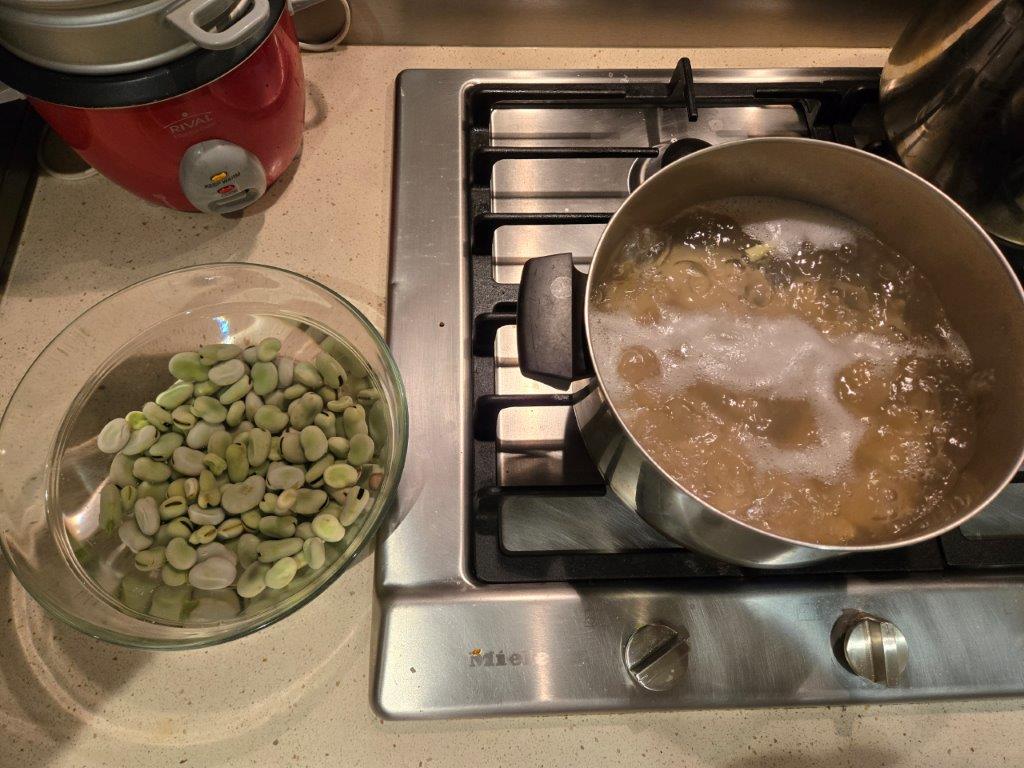
And then…. you have to peel them some MORE!

The final peeled, blanched beans have a lovely green color (mostly) and a taste that’s like a lima bean but a bit milder. These are prepared with a velouté sauce.
Wait… a velouté sauce? Is this… is this FRENCH cooking? Oh dear. OK, let’s figure this out.
First, you make a roux with flour and butter. Different recipes disagreed on the color of the roux, and the associated cooking time. We went with about 10 minutes of constant stirring and a medium blonde color.
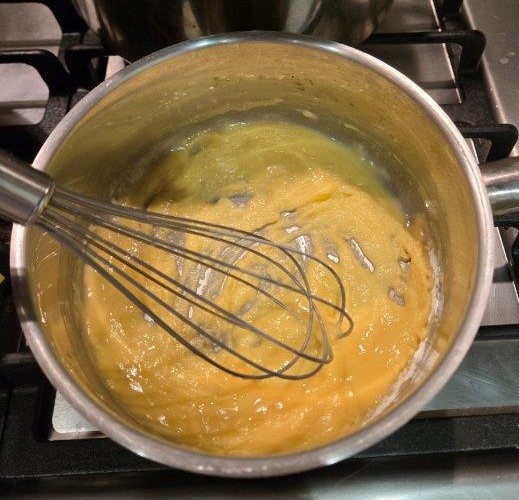
Next, you go in with stock (from the pork) and wine. Now, our local liquor store din’t have any Luxembourg wine, but we did find a Riesling from very nearby. (Nearby to Luxembourg, not nearby to the liquor store.) Neither Leigh or I were terribly familiar with Rieslings, but we were a bit taken aback by the Wikipedia subsection: “Petroleum notes in aged Riesling wines“.
We didn’t detect any petroleum ourselves, fortunately.
Once the sauce has thickened, you toss in the beans and your seasoning. The recipe calls for fresh savory, and we subbed that (as suggested) with sage and thyme. However, we forgot to reduce the quantity for dried, rather than fresh herbs, so it took on a bit of a grey cast. It didn’t TASTE overseasoned, but it looked somewhat weird.
Finally, we parboiled some new potatoes, fried them in oil, and then let them soak up some more of the stock.
And here’s our final spread.
Not bad, right? The pork is the healthy pink color it’s supposed to be, and was still a nice chewy texture. The beans were OK by themselves, but great scooped onto a bite of pork. And finally, what’s not to like about fried potatoes in pork stock? We drank the rest of the wine, and it was a nice accompaniment.
So that’s Luxembourg! I’d make the pork part again, although I’m not sure fava beans are worth the effort. Next up, the “M” countries, starting with Madagascar. And there are a LOT of M countries, so we’ll be here a while.
Recipe:
Judd mat Gaardebounen
